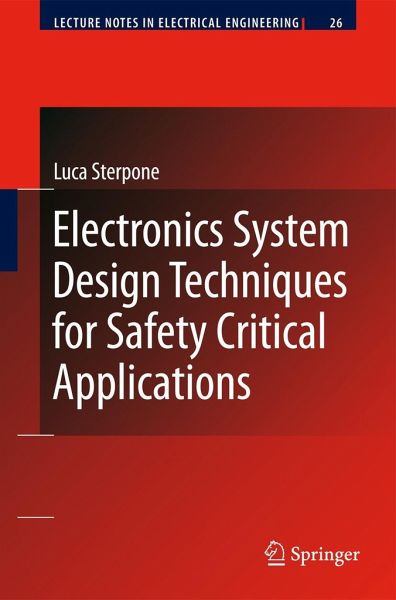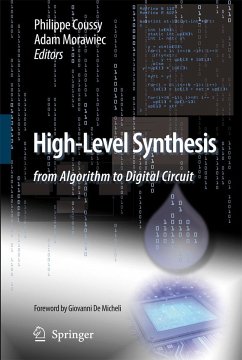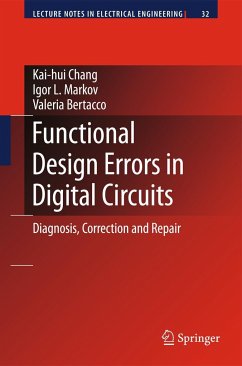
Electronics System Design Techniques for Safety Critical Applications
Versandkostenfrei!
Versandfertig in 6-10 Tagen
76,99 €
inkl. MwSt.
Weitere Ausgaben:

PAYBACK Punkte
38 °P sammeln!
The main purpose of the present manuscript addresses the development of techniques for the evaluation and the hardening of designs implemented on SRAM-based Field Programmable Gate Arrays against the radiation induced effects such as Single Event Upsets (SEUs) or Soft-Errors (SEs). The perspective of the analysis and the design flows proposed in this manuscript are aimed at defining a novel and complete design methodology solving the industrial designer's needs for implementing electronic systems using SRAM-based FPGAs in critical environments, like the space or avionic ones. The main contribution of the proposed manuscript consists in a new reliability-oriented place and route algorithm that, coupled with Triple Modular Redundancy (TMR), is able to effectively mitigate the effects of radiation in SRAM-based FPGA devices. The manuscript offers also the analysis of several fields where the usage of reconfigurable logic devices introduces several advantages such as the reconfigurable computing for multimedia applications and biomedical applications.
What is exactly "Safety"? A safety system should be defined as a system that will not endanger human life or the environment. A safety-critical system requires utmost care in their specification and design in order to avoid possible errors in their implementation that should result in unexpected system's behavior during his operating "life". An inappropriate method could lead to loss of life, and will almost certainly result in financial penalties in the long run, whether because of loss of business or because the imposition of fines. Risks of this kind are usually managed with the methods and tools of the "safety engineering". A life-critical system is designed to 9 lose less than one life per billion (10 ). Nowadays, computers are used at least an order of magnitude more in safety-critical applications compared to two decades ago. Increasingly electronic devices are being used in applications where their correct operation is vital to ensure the safety of the human life and the environment. These application ranging from the anti-lock braking systems (ABS) in automobiles, to the fly-by-wire aircrafts, to biomedical supports to the human care. Therefore, it is vital that electronic designers be aware of the safety implications of the systems they develop. State of the art electronic systems are increasingly adopting progr- mable devices for electronic applications on earthling system. In particular, the Field Programmable Gate Array (FPGA) devices are becoming very interesting due to their characteristics in terms of performance, dimensions and cost.














